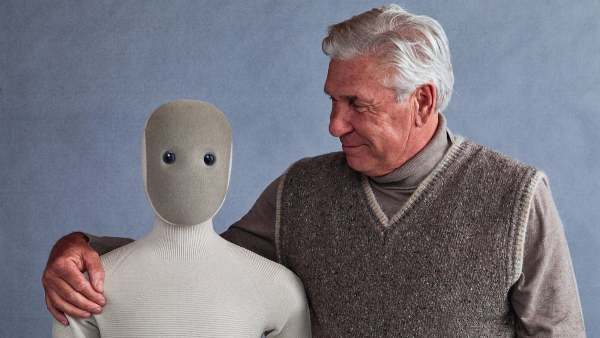Halloween 2025 trick-or-treating time in the U.S. is already trending as families gear up for the big candy night on Friday, October 31. Millions of children across America will head out in costumes, pumpkins, and masks to collect sweets from neighbors. But what time does trick-or-treating actually start this year? The answer depends on where you live. There’s no official national rule. Each city and county sets its own time window. Local police departments and municipal websites release schedules based on daylight and safety.
Data from previous years shows a clear pattern. Most U.S. towns begin trick-or-treating between 5:30 p.m. and 6:30 p.m. and wrap up around 8:30 or 9 p.m. In colder northern states, candy hunts often start earlier, while southern communities, with more evening light, stretch it longer. Pittsburgh, Pennsylvania, has set its 2025 window from 5:30 p.m. to 7:30 p.m., according to CBS News. Mid-Michigan towns are keeping it between 5:00 and 8:00 p.m., reports WNEM. Smaller towns may set exact hours like 5:00–7:00 p.m. or 6:00–8:00 p.m., says WMUR.
Because Halloween 2025 falls on a Friday, many families will take advantage of the extra evening hours since there’s no school the next morning. That means more porch lights glowing, more kids on sidewalks, and longer candy runs. Parents with younger children tend to go out at dusk, around 5:30 or 6 p.m., while older kids stay out later. Country Living notes that this year’s Friday schedule could bring the longest trick-or-treat window in years.
Authorities continue to remind families about safety. They urge people to walk on well-lit routes, use reflective clothing, and carry glow sticks or flashlights. Porch lights remain the universal signal that a house is open for treats, and turning them off means the candy run is done.
So, if you’re planning your 2025 Halloween route, set your watch for around 6 p.m. local time. Expect the fun to roll until about 8:30 or 9 p.m. depending on where you live. The moment the orange and purple lights begin to shine across the streets, that’s your cue — the trick-or-treating rush has begun.
There’s no single nationwide rule. The timing depends on local city or county schedules, daylight, and family routines. Still, patterns from previous years and community notices show a clear trend for 2025.
For example, Pittsburgh, Pennsylvania, has already announced its 2025 hours — 5:30 p.m. to 7:30 p.m., according to CBS News. In mid-Michigan, towns are listing times from 5:00–6:30 p.m. to 6:00–8:00 p.m., reports WNEM.
The timing is influenced by sunset, safety, and local customs. Communities want younger children to start early while there’s still light, and older kids often continue a bit later. Because Halloween 2025 falls on a Friday, families can expect slightly longer trick-or-treat hours this year.
Younger children typically begin at dusk — around 5:30–6:00 p.m. — when porch lights start to flicker on. Older groups often continue until 8:00 or 9:00 p.m., especially in urban or warmer regions.
Smaller towns often set clear time frames — 5:00–7:00 p.m. or 6:00–8:00 p.m., according to WMUR. Because it’s a Friday this year, some communities may extend activities slightly later. Country Living notes that this flexibility lets families enjoy the evening without the stress of school the next morning.
So, the best plan for 2025? Start around 6 p.m. and aim to finish your candy run by 8:30 p.m. unless your local notice says otherwise.
Parents are encouraged to check local news or city websites for official trick-or-treat windows — many towns post them a week in advance. Neighborhoods in suburban areas tend to start earlier, while urban centers often allow longer, later rounds.
If you’re handing out candy, the traditional signal that you’re done for the night is simple — turn off your porch light.
All About Halloween: History, Traditions, and Modern Celebrations
Halloween, celebrated anually on October 31, is one of the most popular holidays across the United States and many parts of the world. Known for its spooky charm, fun costumes, and candy-filled nights, Halloween blends ancient traditions, folklore, and modern festivities into one magical celebration of fright and fun.
The origins of Halloween trace back over 2,000 years to the ancient Celtic festival of Samhain (pronounced “sow-in”). It marked the end of the harvest season and the beginning of winter—a time associated with death and darkness. The Celts believed that on this night, the veil between the living and the dead was thinnest, allowing spirits to roam the earth. People lit bonfires and wore costumes to ward off wandering ghosts.
With the spread of Christianity, Samhain gradually merged with All Hallows’ Eve, the night before All Saints’ Day (November 1). Over centuries, these traditions evolved into what we now call Halloween. The term itself comes from “All Hallows’ Evening,” which was shortened over time.
In the 19th century, Irish and Scottish immigrants brought Halloween customs to America, where the holiday transformed into a community-centered event filled with games, costumes, and treats. By the early 20th century, Halloween had lost much of its religious and superstitious meaning, becoming more about fun, creativity, and community spirit.
Today, Halloween is celebrated with trick-or-treating, where children dress up in spooky or fun costumes and go door-to-door collecting candy. Haunted houses, pumpkin carving, costume contests, and scary movie marathons have become traditions for families and friends alike. The jack-o’-lantern, inspired by an Irish legend about “Stingy Jack,” remains the most iconic Halloween symbol. People carve eerie faces into pumpkins and light them with candles to ward off spirits.
Decorations now range from playful to terrifying, turning neighborhoods into scenes of ghosts, witches, and skeletons. Adults too have embraced Halloween, with themed parties, horror festivals, and elaborate makeup looks trending every year.
Data from previous years shows a clear pattern. Most U.S. towns begin trick-or-treating between 5:30 p.m. and 6:30 p.m. and wrap up around 8:30 or 9 p.m. In colder northern states, candy hunts often start earlier, while southern communities, with more evening light, stretch it longer. Pittsburgh, Pennsylvania, has set its 2025 window from 5:30 p.m. to 7:30 p.m., according to CBS News. Mid-Michigan towns are keeping it between 5:00 and 8:00 p.m., reports WNEM. Smaller towns may set exact hours like 5:00–7:00 p.m. or 6:00–8:00 p.m., says WMUR.
Because Halloween 2025 falls on a Friday, many families will take advantage of the extra evening hours since there’s no school the next morning. That means more porch lights glowing, more kids on sidewalks, and longer candy runs. Parents with younger children tend to go out at dusk, around 5:30 or 6 p.m., while older kids stay out later. Country Living notes that this year’s Friday schedule could bring the longest trick-or-treat window in years.
Authorities continue to remind families about safety. They urge people to walk on well-lit routes, use reflective clothing, and carry glow sticks or flashlights. Porch lights remain the universal signal that a house is open for treats, and turning them off means the candy run is done.
So, if you’re planning your 2025 Halloween route, set your watch for around 6 p.m. local time. Expect the fun to roll until about 8:30 or 9 p.m. depending on where you live. The moment the orange and purple lights begin to shine across the streets, that’s your cue — the trick-or-treating rush has begun.
What time does trick-or-treating start on Halloween 2025 in the U.S.?
Halloween 2025 trick-or-treating time in the U.S. is one of the most searched topics every fall. The big night — Friday, October 31, 2025 — will see millions of kids across America step out in costumes, pumpkin buckets in hand, ready to collect candy. But what time does trick-or-treating actually begin?There’s no single nationwide rule. The timing depends on local city or county schedules, daylight, and family routines. Still, patterns from previous years and community notices show a clear trend for 2025.
Why there’s no official national trick-or-treating time
Unlike federal holidays like Thanksgiving or the Fourth of July, trick-or-treating isn’t set by national law. Each city, town, or neighborhood decides its own window.For example, Pittsburgh, Pennsylvania, has already announced its 2025 hours — 5:30 p.m. to 7:30 p.m., according to CBS News. In mid-Michigan, towns are listing times from 5:00–6:30 p.m. to 6:00–8:00 p.m., reports WNEM.
The timing is influenced by sunset, safety, and local customs. Communities want younger children to start early while there’s still light, and older kids often continue a bit later. Because Halloween 2025 falls on a Friday, families can expect slightly longer trick-or-treat hours this year.
What time should families head out?
Across most of the country, trick-or-treating usually starts between 5:30 p.m. and 6:30 p.m. and wraps up by 8:30 or 9:00 p.m., depending on neighborhood rules.Younger children typically begin at dusk — around 5:30–6:00 p.m. — when porch lights start to flicker on. Older groups often continue until 8:00 or 9:00 p.m., especially in urban or warmer regions.
Smaller towns often set clear time frames — 5:00–7:00 p.m. or 6:00–8:00 p.m., according to WMUR. Because it’s a Friday this year, some communities may extend activities slightly later. Country Living notes that this flexibility lets families enjoy the evening without the stress of school the next morning.
So, the best plan for 2025? Start around 6 p.m. and aim to finish your candy run by 8:30 p.m. unless your local notice says otherwise.
What do local authorities recommend for safety?
Safety remains central to every community’s Halloween plan. Police departments and city councils across the U.S. are already reminding families to stick to well-lit areas, use reflective gear, and carry glow sticks or flashlights to stay visible.Parents are encouraged to check local news or city websites for official trick-or-treat windows — many towns post them a week in advance. Neighborhoods in suburban areas tend to start earlier, while urban centers often allow longer, later rounds.
If you’re handing out candy, the traditional signal that you’re done for the night is simple — turn off your porch light.
All About Halloween: History, Traditions, and Modern Celebrations
Halloween, celebrated anually on October 31, is one of the most popular holidays across the United States and many parts of the world. Known for its spooky charm, fun costumes, and candy-filled nights, Halloween blends ancient traditions, folklore, and modern festivities into one magical celebration of fright and fun.The origins of Halloween trace back over 2,000 years to the ancient Celtic festival of Samhain (pronounced “sow-in”). It marked the end of the harvest season and the beginning of winter—a time associated with death and darkness. The Celts believed that on this night, the veil between the living and the dead was thinnest, allowing spirits to roam the earth. People lit bonfires and wore costumes to ward off wandering ghosts.
With the spread of Christianity, Samhain gradually merged with All Hallows’ Eve, the night before All Saints’ Day (November 1). Over centuries, these traditions evolved into what we now call Halloween. The term itself comes from “All Hallows’ Evening,” which was shortened over time.
In the 19th century, Irish and Scottish immigrants brought Halloween customs to America, where the holiday transformed into a community-centered event filled with games, costumes, and treats. By the early 20th century, Halloween had lost much of its religious and superstitious meaning, becoming more about fun, creativity, and community spirit.
Today, Halloween is celebrated with trick-or-treating, where children dress up in spooky or fun costumes and go door-to-door collecting candy. Haunted houses, pumpkin carving, costume contests, and scary movie marathons have become traditions for families and friends alike. The jack-o’-lantern, inspired by an Irish legend about “Stingy Jack,” remains the most iconic Halloween symbol. People carve eerie faces into pumpkins and light them with candles to ward off spirits.
Decorations now range from playful to terrifying, turning neighborhoods into scenes of ghosts, witches, and skeletons. Adults too have embraced Halloween, with themed parties, horror festivals, and elaborate makeup looks trending every year.
( Originally published on Oct 31, 2025 )








